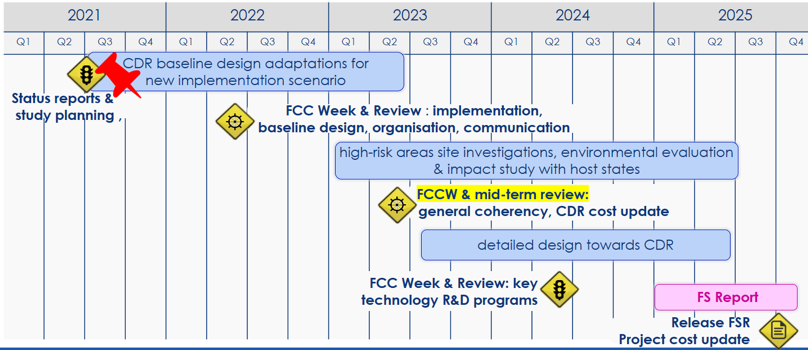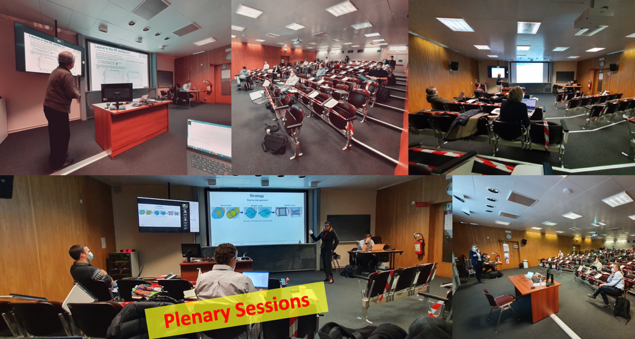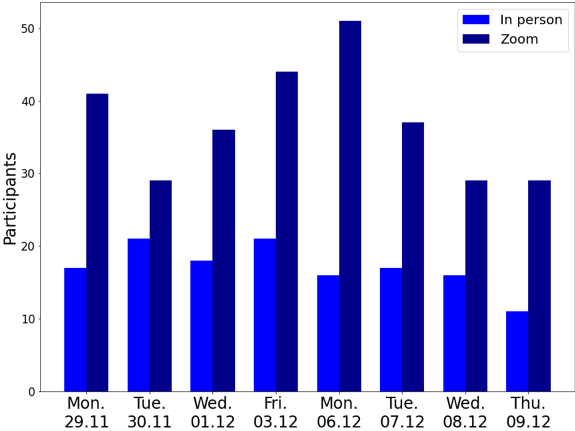In the frame of the Future Circular Collider Innovation Study (FCCIS), a first workshop on the FCC collider design took place at CERN from 29 November to 9 December 2021, in a hybrid format on zoom and at CERN (https://indico.cern.ch/event/1085318/).
The Future Circular Collider (FCC) is a proposed large, particle collider-based research infrastructure for the post-LHC era. Understanding the origins of matter, energy and the inner working of the universe is a "science mission" for the 21st century. This mission is best addressed with an integrated research programme of a highest-luminosity electron-positron particle collider, which is then followed by an energy frontier hadron collider.

The FCCIS is a 5-year research and development programme, co-funded by the European Commission, and an important pillar in the FCC Feasibility Study, requested by the European Strategy Update 2020 and officially launched by the CERN Council in 2021. With 10 million euro funding, the FCCIS connects a number of European universities and research institutions contributing to the FCC collider design, to outreach activities, and to the project implementation. Figure 1 shows the timeline of the FCC Feasibility Study.
While the energy frontier hadron collider requires a longer-term development of its underpinning high-field magnet technology, the lepton machine is based on proven technology and could be built in the nearest future, providing a seamless continuation of the world-wide High Energy Physics research activities. The extreme parameters of this machine pose a number of challenges, however, and a convincing demonstration of reachability of the performance parameters (most importantly the luminosity) is required to allow the whole project to move forward. Among the key questions to be answered are: What is a realistically achievable performance for so large a ring in presence of strong beam-beam interaction and beamstrahlung effects? How many interaction points (IPs) could - or will - the collider have? Can an interaction region satisfying the physics and machine stability requirements be realised and what is the most energy-efficient and sustainable way of operating such an enormous facility? Over the next years, the last open issues need to be clarified, machine parameters further optimised, and a final layout be established. There are a number of less critical, but nevertheless important topics that are also being addressed within the FCC Innovation Study and the FCC Feasibility Study, such as creating the software stack that can be used to model and later control the machine in its full complexity.

The current COVID-19 pandemic affected all initiatives, but the large international collaborations were hit particularly strongly. With restrictions on workshops, conferences, and international travel in general, moving things forward in such a multi-institutional effort as FCCIS was challenging. The more delightful it was to see the enormous progress that had been made by young FCCIS staff in Italy, France, Germany, Switzerland, and Canada, during the first year of the FCCIS project, in various areas of storage ring optics, injector chain design, and technical subsystems. A few workshop photos are compiled in Fig. 2.
The format of the workshop was somewhat similar to the one of the annual FCC Week, but with a narrower and deeper focus on storage ring design and with fewer presentations (56 talks in total), allowing topical working groups to form and to discuss. Plenty of time was allocated for topical discussions in the afternoons, e.g., on the design of the full-energy booster, on collimation, and on the FCC-ee interaction-region magnet system and cryostats. The entire workshop was spread out over two weeks, which allowed efficient communication in compliance with pandemic regulations.

The event timing proved challenging, with the latest infection wave starting to spread and restrictions being introduced during the workshop. The organizers nevertheless managed to bring the event to a successful conclusion, while complying with all evolving rules and with participants’ health as the first priority. The participation per day in person and on zoom is illustrated in Fig. 3.
A special FCC Accelerators and Beam Physics (ABP) Day, integrated into the workshop programme (https://indico.cern.ch/event/1090005), reviewed the key open issues and fostered contacts between the ABP group of CERN’s BE Department and external collaborators to identify and exploit synergies.
The FCC collider design is proceeding at full speed, and we hope to see many colleagues and further progress at the next FCC Week taking place in Paris, from 30 May to 3 June 2022.
Learn more:
